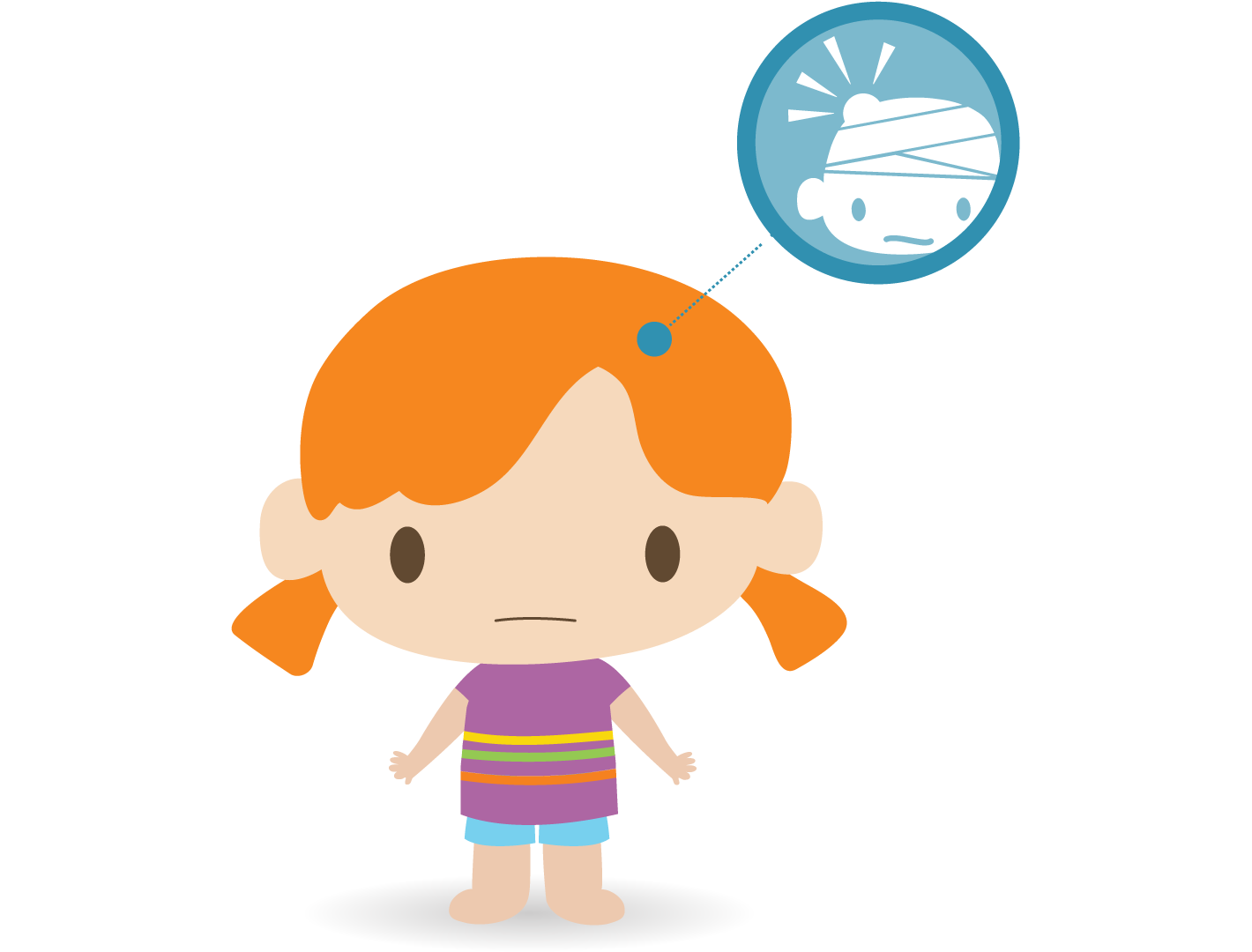
Print / Download Handout: English | French | Arabic | Punjabi
A concussion is a mild brain injury resulting from a jarring of the brain following a head injury. Head injuries can result from: a direct blow to the head, a hit to the upper body, or a rapid accelerating/decelerating force on the body. These forces cause the brain to move inside the skull. Concussion symptoms can occur even without a loss of consciousness (fainting/black out) and can last minutes or hours to days and months.
Concussions are a brain injury that will not be seen on xrays, CT scans or MRIs. They can affect the way a child may think, behave and remember things.
The signs (seen by others) and the symptoms (felt by the person) of a concussion can be hard to notice. Symptoms may start hours or rarely, days later. A concussion can cause one or more of the following:
Early symptoms of concussion:
Late symptoms of concussion:
Very young children may show the following signs:
A concussion is a serious event but most children can recover fully if their brain is given time to rest and recuperate. Returning to regular activities like school and sport is a step-by-step process that requires patience and caution.
A ‘Return to School’ and ‘Return to Sport’ system is recommended for children with concussions.
The length of time a child will experience concussion symptoms can be quite variable. Most children will recover within one to two weeks, especially if they follow brain rest and activity rest guidelines that are recommended.
Some children will experience symptoms such as chronic headaches, poor concentration and memory issues for more than two weeks. If the concussion symptoms last longer than a month, your child should be seen by their family doctor and consider a referral to a specialist in concussion management.
The best way to prevent concussions is to prevent high speed/high impact injuries to the head and neck. While helmets are great at avoiding damage to the skull, they DO NOT prevent concussions. Children who have had multiple concussions are at higher risk for long term issues with headaches and learning problems.
Parachute Canada: An excellent guideline for parents and caregivers. Parachute Canada is a national organization dedicated to injury prevention and has multiple tools for families that can be found here.
EchoKT: I think my child has a concussion. Now what? (infographic)
AHS is providing links to these documents for information purposes only. AHS does not necessarily endorse the content therein. The views or opinions expressed in the linked materials are the authors’ own and do not necessarily reflect the views, opinions, positions or policies of AHS. For more information on the terms of use of this webpage please see http://www.albertahealthservices.ca/about/Page635.aspx.

 It can be scary when your child is sick. But in most cases, you don’t need to go to the emergency
department. If you’re unsure, we’re
here to help.
It can be scary when your child is sick. But in most cases, you don’t need to go to the emergency
department. If you’re unsure, we’re
here to help.
The content provided on these pages is not intended to replace medical advice. If you have concerns about the health of your child, contact your health care provider directly. If your child has an emergency, go to the nearest emergency department or call 911. Alberta Health Services and Project HEAL strive to ensure that all material is correct but will not be held liable for errors or incomplete information contained in these pages.